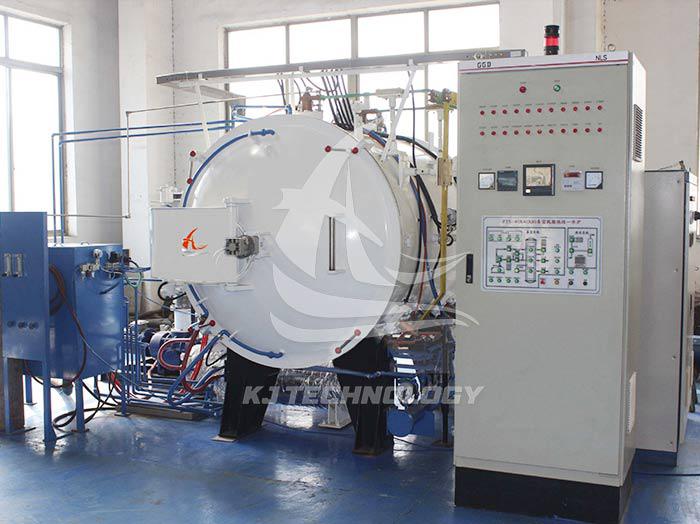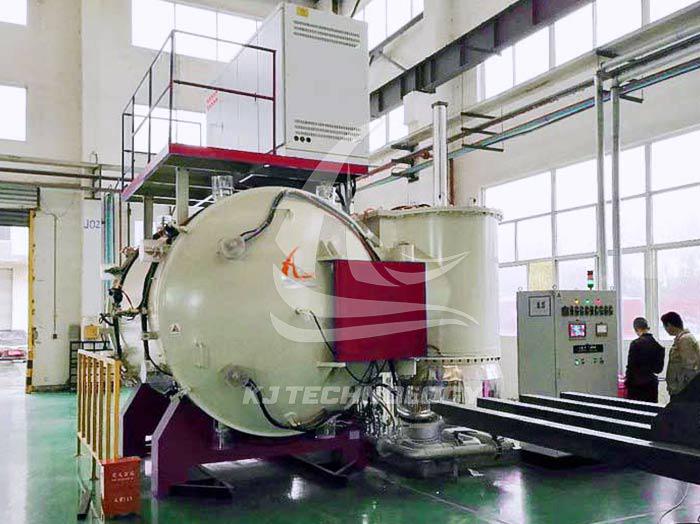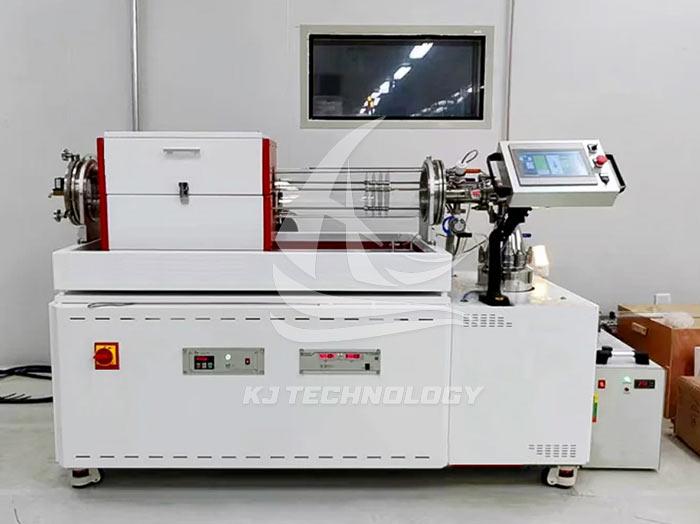Daily maintenance of high vacuum and high temperature muffle furnace
 09-16-2025 Author: KJ technology
09-16-2025 Author: KJ technology
As a precision heat treatment equipment, the daily maintenance of a high vacuum and high temperature muffle furnace needs to revolve around five core modules: vacuum system, heating system, furnace structure, control system, and safety protection. Scientific maintenance not only extends the lifespan of equipment, but also ensures process stability. The following is a detailed maintenance plan:
1. Vacuum system maintenance
a. Maintenance of vacuum pump
Oil level inspection: Check the oil level of the mechanical pump (at 1/2~2/3 of the oil window) before starting up daily, and confirm the oil level of the diffusion pump before heating.
Oil quality replacement:
Mechanical pump oil: Replace every 200 hours of operation or when emulsification or discoloration is found.
Diffusion pump oil: Replace every 1000 hours of operation or when the vacuum level drops.
Oil circuit cleaning: Wipe the oil circuit filter with a dust-free cloth every quarter to prevent impurities from clogging.
Pump body heat dissipation: Ensure good ventilation around the pump body to avoid overheating and deterioration of oil quality.
b. Maintenance of vacuum valves
Sealing inspection: Use a helium mass spectrometer leak detector to detect the leakage rate of high vacuum butterfly valves and plug valves every month.
Action test: Manually operate the valve opening and closing every quarter to check if the cylinder or solenoid valve is stuck.
Lubrication and maintenance: Apply high-temperature grease to the piston rod of the pneumatic valve every six months.
c. Vacuum gauge calibration
Ionizing gauge calibration: Compare and calibrate with a standard vacuum gauge every year. If the error exceeds 10%, it needs to be returned to the factory for adjustment.
Pirani gauge cleaning: Wipe the gauge probe with an alcohol swab every six months to prevent dust from affecting the resistance value.
2. Heating system maintenance
a. Heating element inspection
Appearance inspection: Observe daily whether the molybdenum wire, graphite rod, or silicon molybdenum rod is red, uneven, broken, or deformed.
Resistance measurement: Use a multimeter to measure the resistance value of the heating element every quarter. If the deviation from the initial value exceeds 15%, it needs to be replaced.
Wiring tightening: Check monthly whether the connection between the heating element and the copper bar is loose to prevent ignition and erosion.
b. Thermocouple calibration
Temperature comparison: Insert standard thermocouples (such as S-type platinum rhodium 10 platinum) and equipment thermocouples into the furnace at the same time every month, compare temperature readings, and adjust if the error exceeds ± 5 ℃.
Insulation test: Use a megohmmeter to test the insulation resistance of thermocouples every six months (should be ≥ 100M Ω) to prevent leakage interference control.
c. Maintenance of insulation materials
Felt inspection: Check whether the ceramic fiber felt or carbon felt is damaged or detached every quarter, and repair or replace it in a timely manner.
Fastener fastening: Check the insulation layer's fixing bolts for looseness every year to prevent uneven temperature caused by felt displacement.
3. Furnace structure maintenance
a. Furnace cleaning
Daily cleaning: After each use, use a vacuum cleaner to remove the oxide scale and slag inside the furnace to avoid residue affecting the vacuum degree.
Deep cleaning: Wipe the inner wall of the furnace with alcohol or acetone every six months to remove stubborn stains (after cooling to room temperature).
b. Maintenance of water cooling system
Water quality testing: Monthly testing of cooling water pH value (6.5-8.5) and conductivity (≤ 10 μ S/cm) to prevent scaling and corrosion.
Flow monitoring: Check the water flow indicator daily to ensure that the cooling water flow rate of key parts such as diffusion pumps and furnace doors is ≥ 3L/min.
Pipeline cleaning: Clean the waterway with citric acid solution every six months to remove scale (requires professional operation).
c. Maintenance of furnace door seal
Sealing ring inspection: Observe the fluororubber O-ring daily for aging and cracking, and replace it every 2 years.
Cleaning and maintenance: Wipe the surface of the sealing ring with alcohol every week and apply vacuum silicone grease to enhance the sealing performance.
4. Control system maintenance
a. Instrument calibration
Temperature controller: Calibrate PID parameters annually with a standard signal source to ensure temperature fluctuations of ≤± 2 ℃.
Vacuum controller: Calibrate the deviation between the vacuum set value and the actual value every six months.
b. Electrical component inspection
Contactor contacts: Check the contactor contacts for erosion every quarter, and if necessary, polish or replace them.
Line insulation: Use a megohmmeter to test the insulation resistance of the main circuit every year (should be ≥ 1M Ω) to prevent leakage.
c. Software upgrade
System update: Contact the manufacturer every 2 years to upgrade the control software, fix potential vulnerabilities, and optimize the process curve.
5. Safety protection and maintenance
a Grounding resistance test
Every year, use a grounding resistance tester to test the grounding resistance of the equipment (should be ≤ 4 Ω) to prevent static electricity or leakage risks.
b. Emergency stop function test
Simulate triggering the emergency stop button every quarter to check if the heating, vacuum, and cooling systems immediately stop.
c. Inspection of protective cover
Check if the protective cover of the heating element is deformed every month to prevent short circuits caused by workpiece contact.
6. Maintenance records and plans
Establish a file: Record the maintenance time, content, replacement part model, and manufacturer for each maintenance, to facilitate problem tracing.
Develop a plan: Based on the frequency of equipment usage (such as daily/weekly/monthly), create a detailed maintenance schedule and post it next to the equipment.








